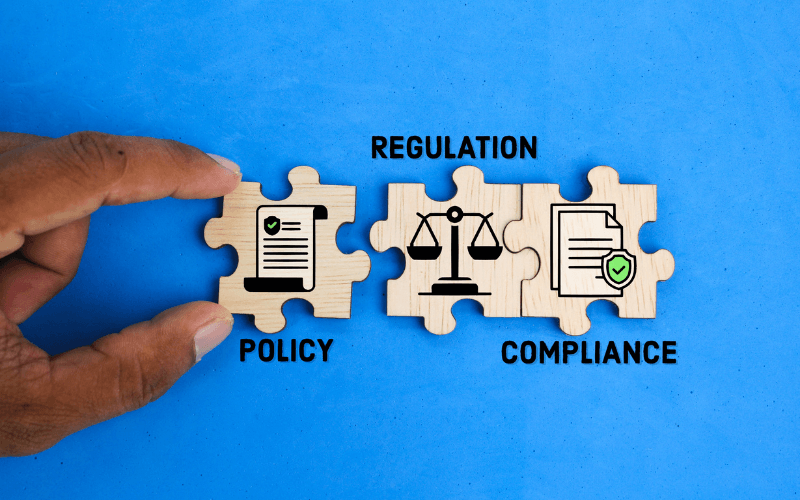In our previous blog post, we discussed the history of compliance and why it should be approached strategically using key tools. Now, let’s explore how strong compliance practices and solid corporate governance can transform your management routine—and, in turn, your results.
What you will find on this blog:
ToggleStrategic Allies in Business
Compliance refers to the set of practices that ensure an organization operates in line with legal and ethical standards. When embedded in a company’s culture, governance makes this task significantly more effective. In successful companies, these two forces go hand in hand—or at least, they should. But what exactly is governance?
What is Compliance? A Complete 2025 Guide
Governance: Turning Responsibility into Structured Steps
Governance, derived from the word “govern,” implies direction and control. While it may sound political, governance plays a vital role in the private sector.
Since the 1980s and 1990s, the term has gained prominence in the business world as a framework for how institutions should be directed and how they interact with shareholders, stakeholders, and the broader market. Every organization can—and should—rely on ethical governance to create a responsible and sustainable business environment.
In an interview with the OECD, the Director of Financial and Enterprise Affairs highlighted governance as a way for businesses to be “well-managed, operate ethically, and remain accountable to shareholders and stakeholders.”

The Core Pillars of Corporate Governance:
- Corporate Responsability: Ensures ethical and lawful operations: Garante que a empresa atue dentro da lei e com ética
- Accountability: Through reporting, internal controls, and audits, organizations can track performance and areas for improvement: por meio de relatórios, controles internos e auditorias, é capaz de comprovar os resultados da governança, pontos fortes e pontos de melhorias
- Transparency: Supported by clear policies, open communication and whistleblower channels: com canais de denúncia, políticas claras e controles internos
Governance defines the strategic framework, while compliance ensures it’s implemented through rules, controls, and ethical standards. One handles the why and where, the other ensures the how.
Shall we go through an example? Let’s say a company sets up a board of directors (governance), but fails to implement a code of conduct or a whistleblower system (compliance). Or the opposite: it applies compliance tools without a defined governance strategy. In both cases, the outcome is inefficient—and fuels the myth that these systems too complexed and are only for large corporations.
Build Culture, Apply Strategy: How Belt Transforms Risk Management
Business success isn’t about miraculous formulas. But here’s an exception:
Responsibility + Proactivity + Planning = Business Transformation

The best way to reach that equation is by using the right tools. That’s where Belt by Actio comes in.
Corporate Responsability through Belt by Actio
From a compliance standpoint, our software is a smart solution for risk management. It helps you identify regulatory weaknesses and manage them efficiently. However, the best kind of risk management is prevention. Tha's why Belt also supports building organizational charts and defining corporate responsibilities—key elements of a governance system.
Risk management: What it is, how to do it, and processes
Mais do que apontamentos, Belt também transforma riscos, atuais ou futuros, em dados palpáveis; valores, inclusive financeiros, a depender da sua preferência. Dessa forma, sua jornada de empreendedorismo se torna mais fácil com o entendimento real e direto de causas e consequências

What kind of challenge could your business overcome with a well-structured governance and compliance system? LinkedIn, Facebook and Instagram Share in the comments and explore everything Belt has to offer on our website!






